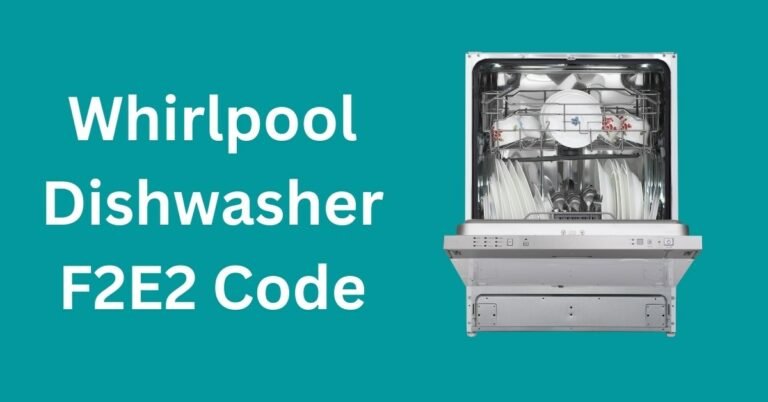
Understanding the mysteries of household appliances can feel daunting, but error codes are kind of like your dishwasher speaking to you, saying, “Hey, something’s not right!” The E2 error code is your dishwasher’s way of telling you there’s a specific issue needing attention. While the flashing code might seem like a secret language, don’t worry! We’ll unlock its meaning and help you sort things out.
Understanding Error Code E2 on Your Whirlpool Dishwasher
So, what exactly does Error Code E2 mean? Essentially, this code indicates that your dishwasher is experiencing a problem with draining. Think about your dishwasher as a large, automatic sink; it fills up with water, cleans the dishes, and then needs to drain that water out before starting everything over again. If the water doesn’t drain properly, it can’t complete its cycle. The E2 error code is simply the dishwasher’s way of saying, “I can’t drain the water!”
Draining issues can happen for a few reasons. Sometimes, it’s as simple as a kinked hose, similar to stepping on a garden hose that stops the water flow. Other times, it might be something stuck in the drain pump or even a blockage in the home’s plumbing. Just like how a sink needs a clear path for water to flow smoothly, so does your dishwasher. By recognizing this code, you can pinpoint that it’s a drainage issue and focus your efforts in that area.
Before diving under the hood of your appliance, it’s important to recognize the significance of this error. While it might sound technical, it’s really not much different than dealing with a clogged shower drain. Knowing it’s a drainage issue helps streamline troubleshooting, so you can get things back to normal without unnecessary guesswork.
Step-by-Step Guide to Troubleshooting the E2 Error
First things first, let’s start with the simplest checks. Like I mentioned, a kinked hose is one of the easiest fixes. Pull out the dishwasher and inspect the drainage hose for any obvious twists or bends. Imagine the hose as a straw; if it’s bent, nothing can go through it smoothly. Straightening it out might be all you need to do to solve the problem.
Next, if the hose seems fine, you might want to check the dishwasher’s drain pump. This is a small but mighty part that works tirelessly to push water out of the machine. Sometimes, bits of food or debris can get lodged in the pump, causing the E2 code to appear. To check this, you’ll need to remove the pump cover and have a peek inside. If you see debris, carefully clear it out. Always make sure to unplug the dishwasher first to stay safe during any inspection.
Lastly, if the above methods don’t resolve the problem, consider examining your home’s plumbing. Just like how a traffic jam affects the whole road, a blockage further down the plumbing line can impact the dishwasher’s drainage. If you’re not comfortable doing this yourself, it might be time to call in a professional plumber.
Preventative Measures to Avoid Future E2 Errors
Now that you’ve tackled the E2 error, let’s talk about preventing it from happening again. Much like regular maintenance on a car keeps it running smoothly, a little bit of diligence goes a long way with your dishwasher. Start by ensuring you scrape plates before loading them, as fewer food particles mean less chance of clogging the machine’s parts.
Once a month, consider running an empty cycle with a cup of vinegar. This natural cleaner helps break down food residue and can keep the hoses and pumps cleaner. It’s like giving your dishwasher a much-needed detox! Also, make it a habit to periodically check and clean the filters inside your machine. These often-overlooked components can get choked with debris over time, much like how a lint filter in a dryer can fill up.
Finally, make sure your dishwasher has enough space around it for ventilation. This might not seem directly related to drainage, but overheating can impact the performance of the pump and other components. Keeping it well-aired ensures that all parts function optimally, giving your machine a longer life and reducing the chances of running into errors like E2.
So there you have it! Now you know what the E2 error code means and how to address it with confidence. With these tips and preventative measures, you can keep your Whirlpool dishwasher running smoothly, leaving you more time to enjoy the clean dishes and less time worrying about error codes!